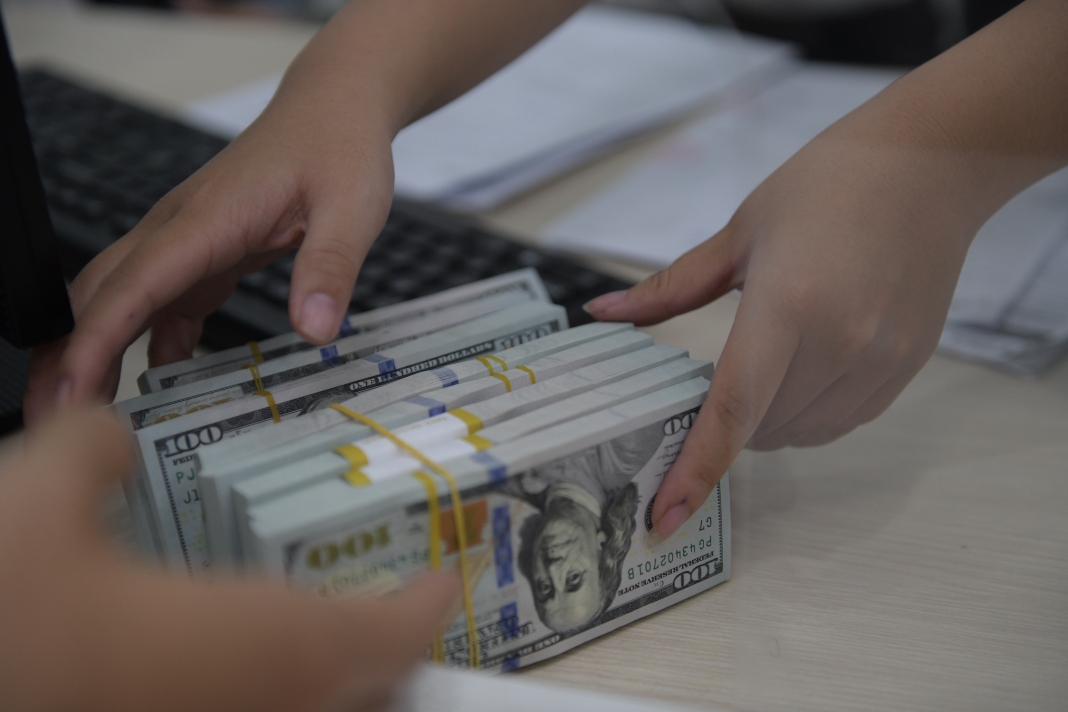Vietnam’s foreign exchange reserves are being replenished.
Signs foreseen
The State Bank of Vietnam (SBV) has been buying foreign currency since January, acquiring an extra US$2.78 billion last month, raising the nation’s foreign exchange reserves to US$91.78 billion, as per an analytical report published by BIDV Securities in early February. More recently, a report by VNDirect says the central bank got hold of some US$3.6 billion from the beginning of 2023 until mid-February. In other words, over US$0.8 billion was purchased in the first half of this month.
VNDirect forecasts Vietnam’s foreign exchange reserves will have reached US$102 billion by the end of 2023, equivalent to 3.3 months of import cover.
The highest record of forex reserves was established in late 2021 at US$110 billion. However, in 2022, particularly in the first 10 months of the year, in an attempt to keep the foreign exchange market stable against the excessive downward pressure on the dong, the central bank had to constantly sell foreign currency, bringing down the country’s forex reserves by US$21 billion in the process.
Now, it seems Vietnam’s foreign exchange reserves are being replenished. In light of the worsening outlook for the greenback in international markets, with the U.S. Dollar Index having dropped 8.8% since its peak in mid-October 2022, the pressure on the exchange rate in quite a few economies has considerably lessened, paving the way for these nations to build up their forex reserves again.
India, South Korea, Taiwan and Southeast Asian countries in total have bought an additional US$132 billion since November 2022, according to recent statistical data from Bloomberg. This is more than half of the sum they sold last year. The foreign exchange reserves of these economies fell by US$243 billion in the first 10 months of 2022 as they sought to prevent their respective currency from further depreciating against the U.S. dollar. For example, South Korea’s forex reserves picked up for three months in a row from November 2022 to January 2023.
In Vietnam, the exchange rate has stabilized since November last year. Specifically, on the free market, the price of the greenback, after a sharp decline of VND1,800 in the final two months of 2022, especially in December, further went down by more than VND250 in January 2023. This is one of the important foundations that support the central bank’s move toward purchasing foreign currency again.
It should be noted that the resumption of foreign currency buying was already hinted at in mid-December 2022, when the SBV unexpectedly quoted the buying price for the U.S. dollar again, with a reference rate of VND23,450 per dollar, after it had been left blank for more than three months, as remarked in the article “How Foreign Currency Purchase Is Getting A Restart?” on the Saigon Times. And this rate has been kept stable since then, whereas the selling price has remained unchanged at VND24,780 per dollar, i.e. the gap is quite big at VND1,330.
Pending a positive impact on interest rates
Besides a stable exchange rate between the U.S. dollar and the dong, the fact that foreign currency supply is getting abundant again also helps the operator build up foreign exchange reserves. Following a trade surplus of US$12.4 billion in the whole year of 2022, January 2023 continued to witness a surplus of US$660 million in the balance of trade, as per data from the General Department of Customs. That figure, though far more modest than the sum of US$3.6 billion earlier predicted by the customs authority, suggested the momentum for trade surplus is still ongoing.
Regarding investment activities, foreign direct investment disbursed in January was estimated at US$1.35 billion, while foreigners on the stock market have been highly active as net buyers since November 2022. In addition, overseas remittances that often hit their peak in January every year is another crucial factor in making the supply of foreign currency bountiful again.
More importantly, speculation, swing trading and hoarding of foreign currency had become significantly less common compared to the period from the third quarter to the beginning of the fourth quarter of last year, when expectations for the devaluation of the dong were extremely high as the U.S. Federal Reserve (Fed) kept hiking interest rates aggressively. Besides, the uncertainties in the financial and monetary markets in September and October, when a certain bank was placed under special control, might have boosted the demand for foreign currency then, but now it has cooled down.
Recently, the director general of the Foreign Exchange Management Department said, “With market liquidity ample and legal foreign currency needs in the economy fully addressed, the SBV does not have to use the national foreign exchange reserves to intervene and stabilize the market. The situation of individuals taking advantage of buying foreign currency cash at authorized credit institutions for their own profit has gradually been prevented, and there are no longer queues of people looking to get their hands on foreign currency at banks. The supply of foreign currency has improved, and now, the central bank has purchased a net of foreign currency for the country’s forex reserves.”
In addition, by monitoring and observing the reports of credit institutions, the SBV reported that one-way money transfers from Vietnam to other countries throughout the system (for travel, study, family allowance, or settlement overseas, etc.) have sharply shrunk (by about 40% in November against October 2022). The volume of foreign currency credit institutions granted individuals in cash has remarkably dwindled as well (by some 57% in November against October 2022), whereas the sum in their possession has increased (by 69% in November versus October).
The fact that the SBV is net buying foreign currency again means it will provide the dong with a great deal of liquidity, which will help the dong interest rates cool down and become more stable. Specifically, with the net buying value of US$3.6 billion, as mentioned above, it is estimated that the central bank has pumped out more than VND84.4 trillion since the beginning of this year, helping make the system’s liquidity more ample. And, as we can see, interest rates have displayed signs of going down again, reflected in the deposit rate cuts at several banks since early February.
On this basis, it is not hard to understand why many forecasts have recently made a 180-degree turn, saying the central bank will probably keep its operating rate as is this year or even put in efforts to lower lending rates for the sake of the business community and the economy, via those solutions designed as a liquidity aid in the open market, and continue with foreign currency purchase to expand the nation’s foreign exchange reserves. This is one of the key tasks for the banking industry in 2023, as assigned by the Prime Minister.









